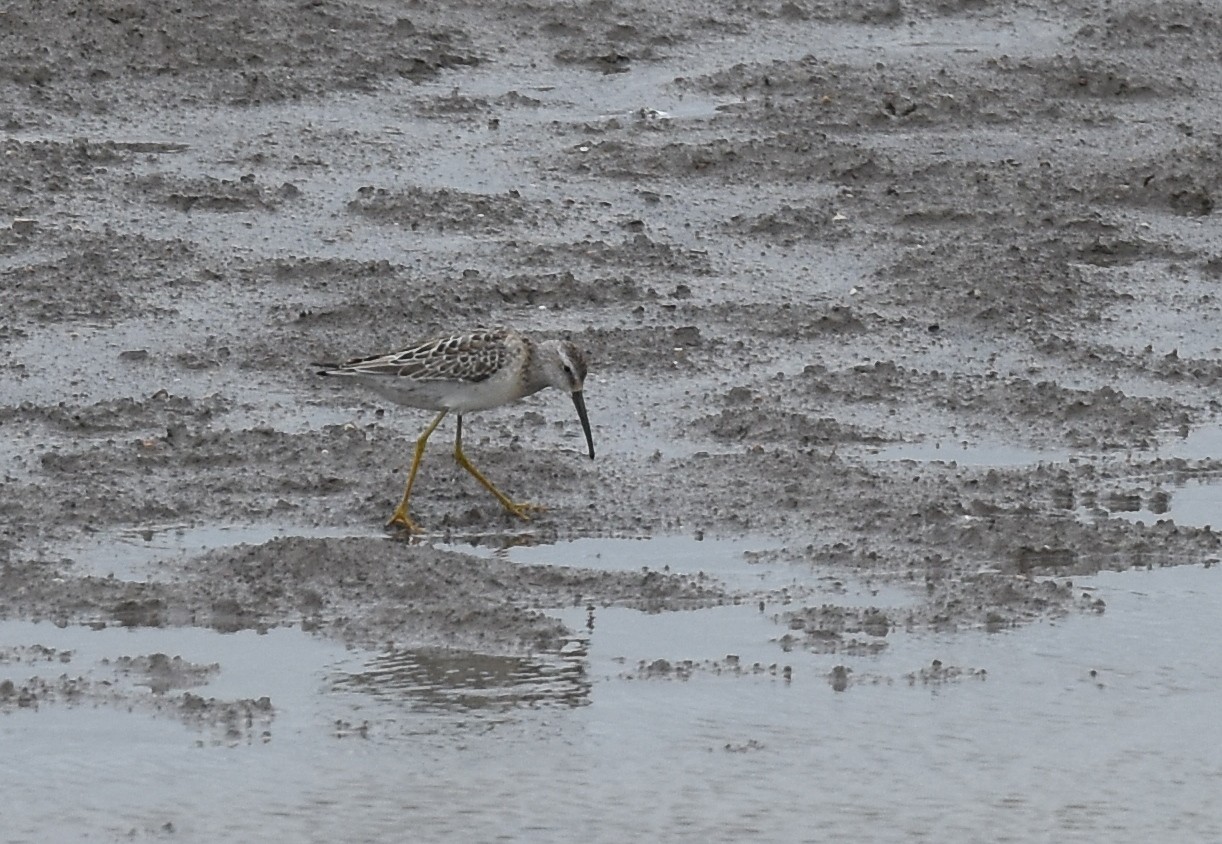Stilt Sandpiper
A species of Calidris, Also known as Bastard Yellowlegs, Frost Snipe Scientific name : Calidris himantopus Genus : Calidris
Stilt Sandpiper, A species of Calidris
Also known as:
Bastard Yellowlegs, Frost Snipe
Botanical name: Calidris himantopus
Genus: Calidris
Content
Description General Info
 Photo By Andy Reago & Chrissy McClarren , used under CC-BY-2.0 /Cropped and compressed from original
Photo By Andy Reago & Chrissy McClarren , used under CC-BY-2.0 /Cropped and compressed from original Description
This species resembles the curlew sandpiper in its curved bill, long neck, pale supercilium and white rump. It is readily distinguished from that species by its much longer and paler legs, which give rise to its common and scientific names. It also lacks an obvious wing bar in flight. Breeding adults are distinctive, heavily barred beneath, and with reddish patches above and below the supercilium. The back is brown with darker feather centres. Winter plumage is basically gray above and white below. Juvenile stilt sandpipers resemble the adults in their strong head pattern and brownish back, but they are not barred below, and show white fringes on the back feathering. Measurements: Length: 7.9-9.1 in (20–23 cm) Weight: 1.8-2.5 oz (50-70 g) Wingspan: 38–41 cm 
Size
19-22 cm (7.5-8.5 in)
Life Expectancy
9 years
Nest Placement
Ground
Clutch Size
2 - 5 eggs
Feeding Habits
Stilt Sandpiper primarily consume aquatic invertebrates, including various beetles, snails, and insect larvae, complemented by plant matter such as seeds. They forage by probing mud with their sensitive bills, hunting both tactually and visually, at times up to their bellies in water. These birds, often feeding with dowitchers, also display jabbing behavior and can feed nocturnally.
Habitat
Stilt Sandpiper breeds in the arctic tundra of North America, favoring open wet meadows and dry slopes vegetated with shrubs like dwarf birch and willows. Adapting to low arctic and subarctic zones, they occupy various altitudes. During migration, stilt Sandpiper seeks freshwater marshes and ponds, avoiding the sea. Winter habitats include central South America, ranging from natural areas to agricultural lands and rice fields.
Nest Behavior
Stilt Sandpiper males create multiple scrapes for females to select a site. After nest building, the typical egg-laying and parental care follow, with species-specific timing.
Nest Characteristics
Stilt Sandpiper's nest is often a shallow depression in the tundra, chosen by the female and lined with leaves, grasses, and lichens, measuring roughly 4.1 inches wide and 1.2 inches high, near dwarf birches or willows and sometimes water.
Dite type
Aquatic invertebrate eater
General Info
Feeding Habits
Bird food type
Behavior
The stilt Sandpiper exhibits a unique courtship involving males chasing females, performing aerial displays with V-shaped wing raises, singing, and side-to-side rocking before landing. Post-courting, stilt Sandpipers may become less showy, focusing on egg-laying. They maintain monogamous relationships, possibly mating for life, with territories established but loosely defended post-egg-laying. Parents cooperatively incubate and protect chicks, with males often bearing the brunt of parenting, including caring for others' offspring. In non-breeding seasons, stilt Sandpipers sociably feed and roost in flocks, showing minimal aggression, often mingling with other shorebirds like yellowlegs and dowitchers.
Species Status
Not globally threatened.

 Photo By Andy Reago & Chrissy McClarren , used under CC-BY-2.0 /Cropped and compressed from original
Photo By Andy Reago & Chrissy McClarren , used under CC-BY-2.0 /Cropped and compressed from original Scientific Classification
Phylum
Chordates Class
Birds Order
Shorebirds Family
Sandpipers Genus
Calidris Species
Stilt Sandpiper